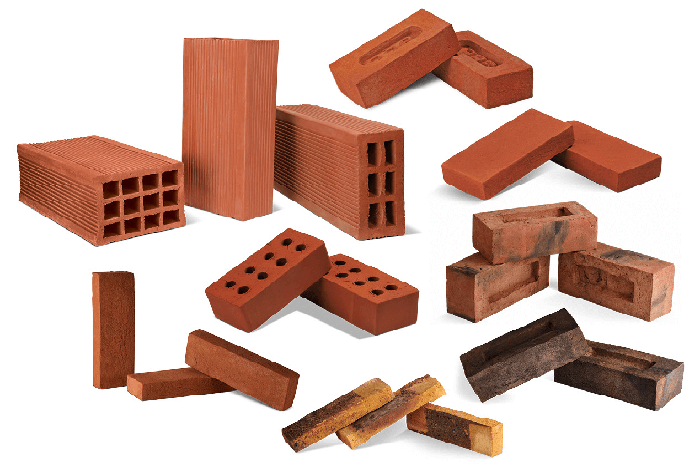The size of a standard brick is: 76 mm high x 230 mm long x 110 mm wide. Some bricks are made with different sizes. 50 mm and 90 mm high bricks, 90 mm wide bricks & 290 mm long bricks are manufactured for different structural and aesthetic effect. Larger bricks are often used for more economical laying and as design feature either on their own or combined with smaller bricks.
In India, the size of brick is 228 × 107 × 69 mm.
Larger Hollow bricks (140 mm w x 90 mm h x 290 mm l) are generally used in cyclonic area to ensure reinforcement and grouting in the wall. Wider (150 mm wide) bricks are used in walls requiring lower sound transmission, greater fire resistance levels & higher load bearing capacity depending on the specific brick properties. Circular Cavities are made in bricks. Its’ benefits are that they aid in firing process, reduce weight for handling, provide better bond for mortar.
Clay brick sizes may vary after they are fired but size variation between units averages out when blended properly during laying.
In most cases, the length of a brick is about double its width, about eight inches or slightly more so as to ensure proper strength.
Brick Strength
It is defined as the resistance to load per unit area. The strength of brick is determined by the capability of a construction material doesn’t collapse or fall down under the influence of external forces leading to internal stresses.
Engineering bricks have average compressive strength of 59MPa. A common house brick is likely to show a range of 20–40MPa.
Strength for adobe specimen mean compressive strength: 1.195Mpa, mean modulus of elasticity: 204.5MPa, Mean strain at peak strength: 11%, Mean Tensile Strength: 0.17MPa
Strength of EMR autoclaved bric…
… thermal transmittance can be minimized by
1. Avoiding thermal bridges in the brick, and arranging void perforation in quincunx
2. Extending the perforations of void in tongue and grooved area (Tongue and groove is a method of fitting similar objects together) and thereby breaking the thermal bridge.
3. Providing a small gap in the assembly, to improve the bricks conductivity.



